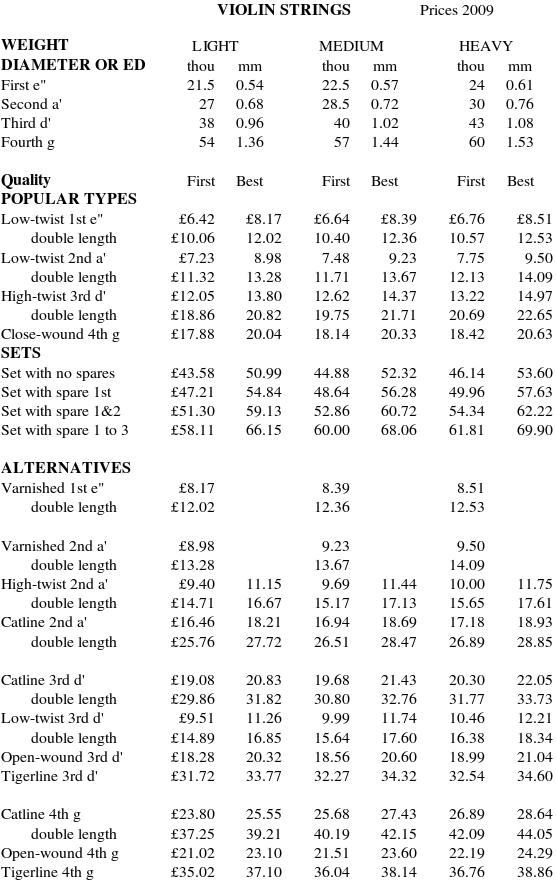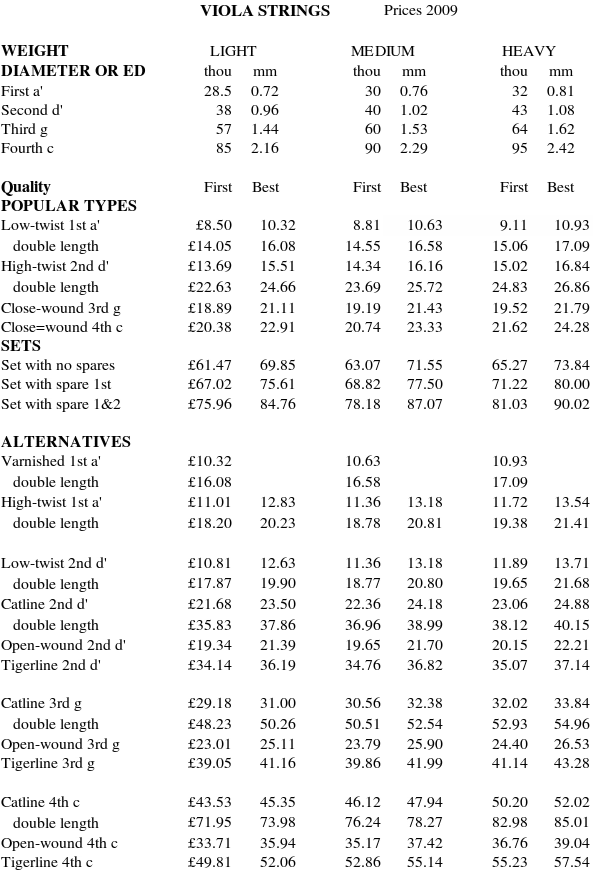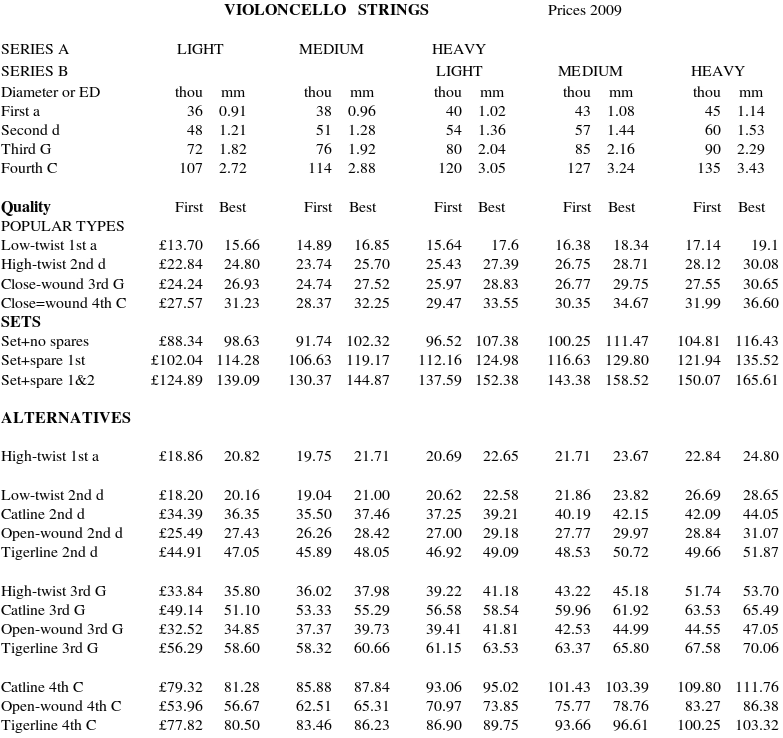
Northern Renaissance Instruments
6 Needham Avenue, Chorlton-cum-Hardy, Manchester M21 8AA, U.K.
Phone & Fax. +44 (0) 161 881 8134 ; proprietor: Dr. Ephraim Segerman [USA]
e-mail: post@nrinst.co.uk ; on internet: http://www.nrinst.co.uk
VIOLIN VIOLA AND CELLO STRINGS
When the violin family joined the Early-Music movement, no serious research into the history of its stringing had yet been undertaken. By the time that research was done and published (The Strad, 1988, pp 52-55 (Jan), 195-201 (Mar), 295-299 (Apr)), the pioneers had already arrived at stringing practices they thought were appropriate, and were very satisfied with. Their services were so much in demand that there was neither opportunity nor motivation to change to more historical practices.
When they worked out their stringings, the pioneers were under the false impression that baroque stringing tensions were generally lower than modern. So they lightened their strings as much as they dared without losing any of the scope of musical expression they felt they needed. Violinists played softly because they couldn't use vibrato to soften the harshness of louder playing, and they ended up with a string tensions only a few percent lower than modern. Cellists had no harshness problem and bowed normally, could reduce the string tension to a quarter less than modern. Our cello Series A and violin standard sets follow these modern-baroque stringing specifications.
The balance between these violin and cello stringings was wrong according to the principle that tension should be proportional to length, which seems to have been followed throughout the history of the family. Most of the cellists have come to realise this and have changed to heavier sets which do balance properly. These are our Series B sets.
The string types and relative tensions of the strings in modern-baroque stringing most closely resemble 19th century stringing practices (but at much lower overall tension levels). So when violins are fitted out specially for playing the classical or romantic music in the 'period' orchestras, the same strings are used. The later the period, the more authentic the stringing becomes. If one is interested in proper authentic stringing, see "Historical Violin Viola and Cello Strings".
Our Medium sets are the most popular. They work well at a'=440, 415 or 392 Hz, but the loudness changes with pitch. A Heavy set will give full output at a pitch lower than normal, and a Light set will avoid excessive volume at a pitch higher than normal, but most players can readily compensate in their bowing, and changing strings for different pitch standards is rarely necessary. Heavy sets allow players more dynamic range, while Light sets aid nimbleness. There is much more information on the choice of strings in "About Strings and Stringing".
In the sets given here, the wound strings in the First columns are wound with silver-plated copper. Copper winding is available at the same price. The gut cores of all wound strings are given the 'Best' treatment for tuning stability, and those in the 'Best' columns are wound with solid silver. The surcharge for polished catlines is £4.90 for a violin catline, £5.95 for a viola catline, and £9.80 for a cello catline or double-length violin catline.


